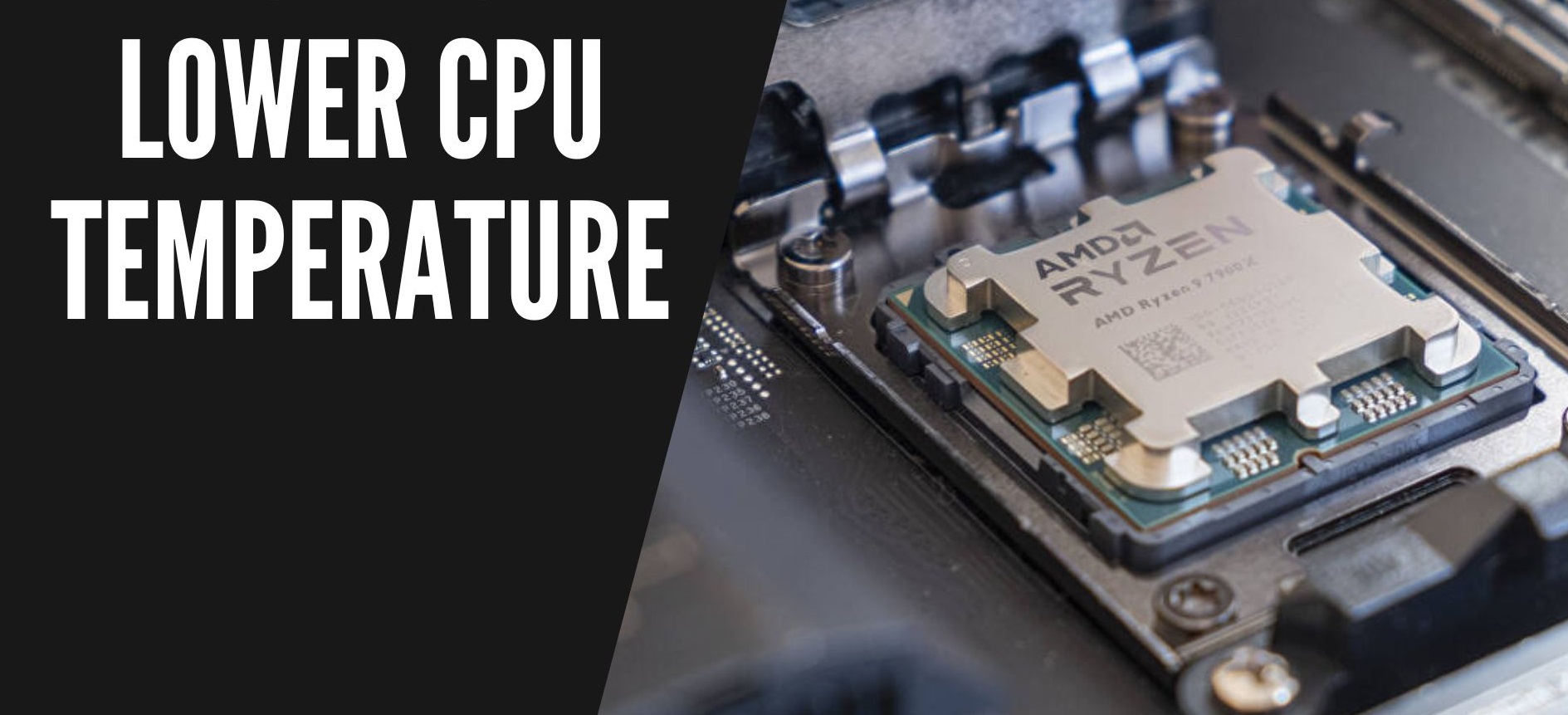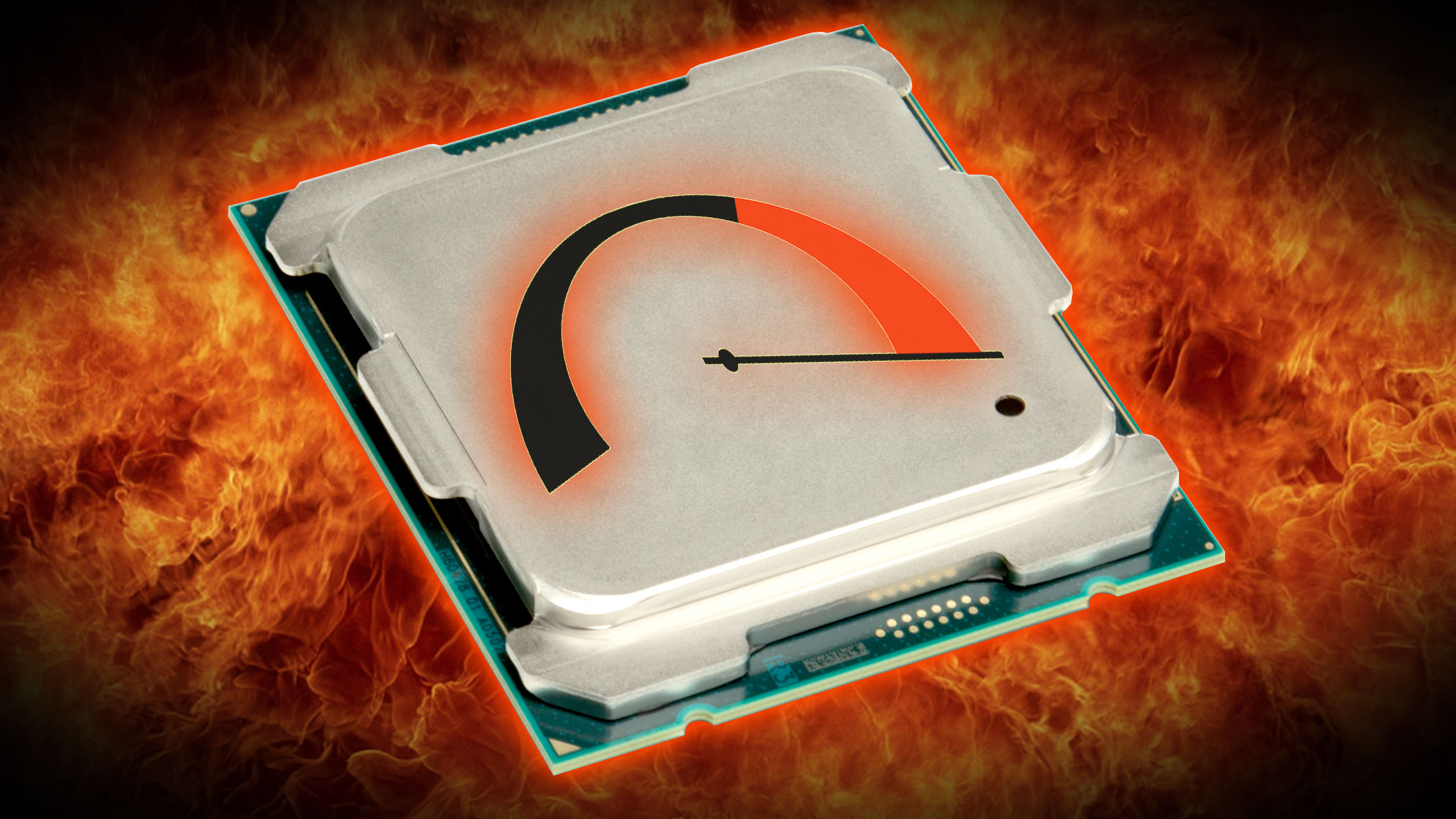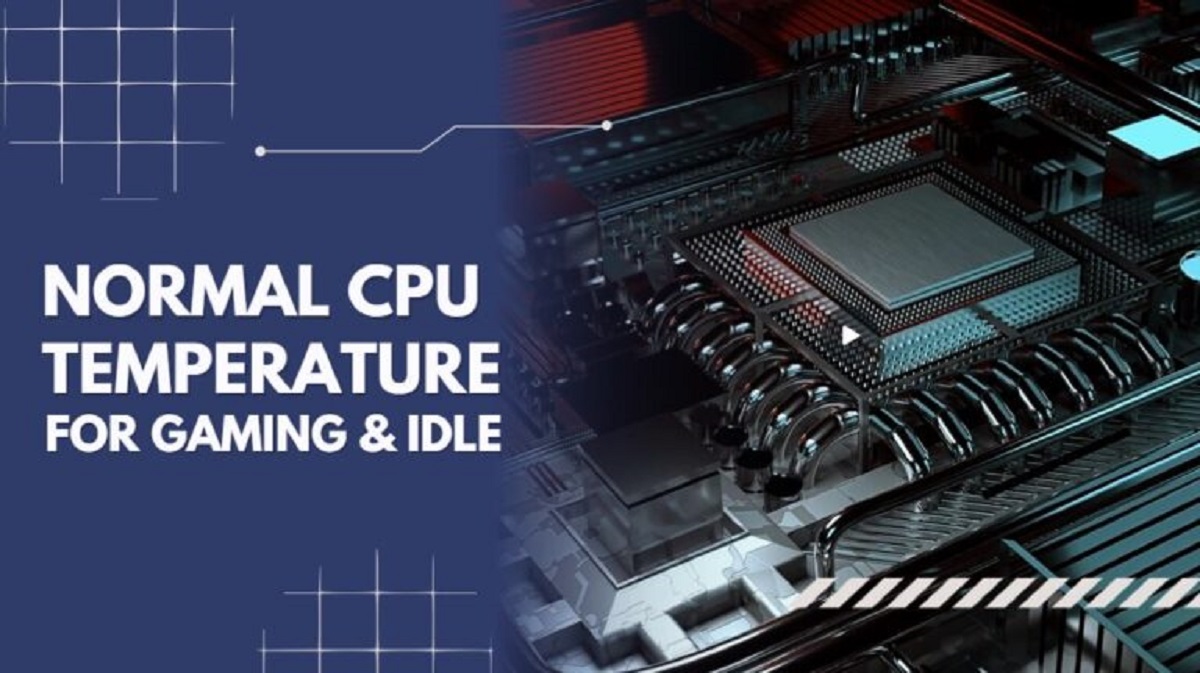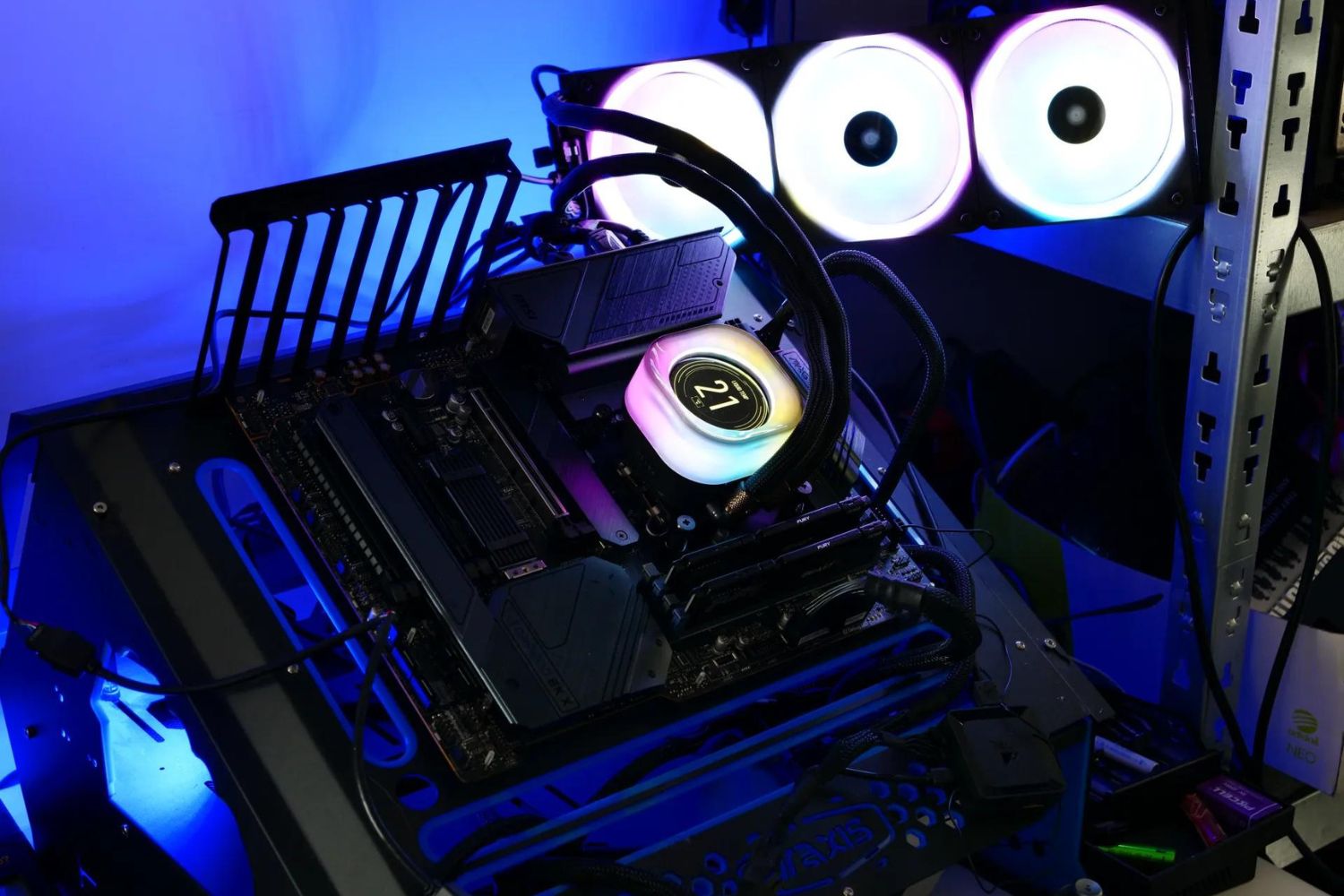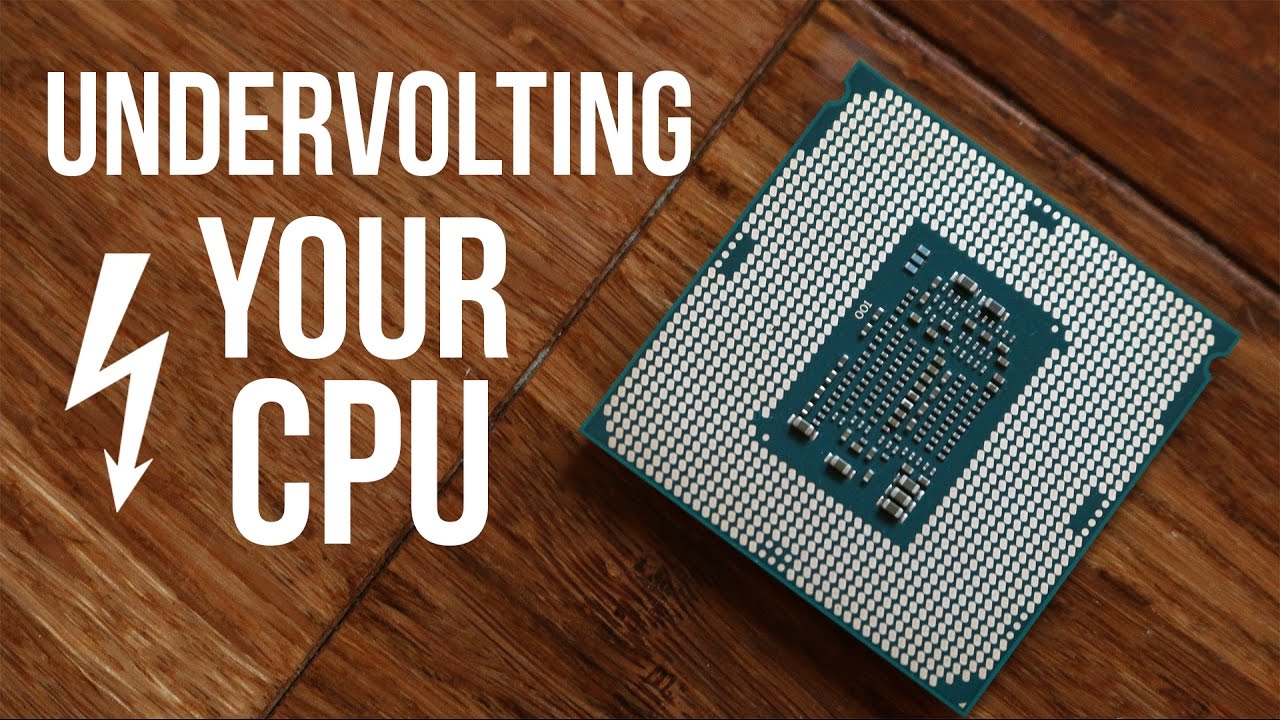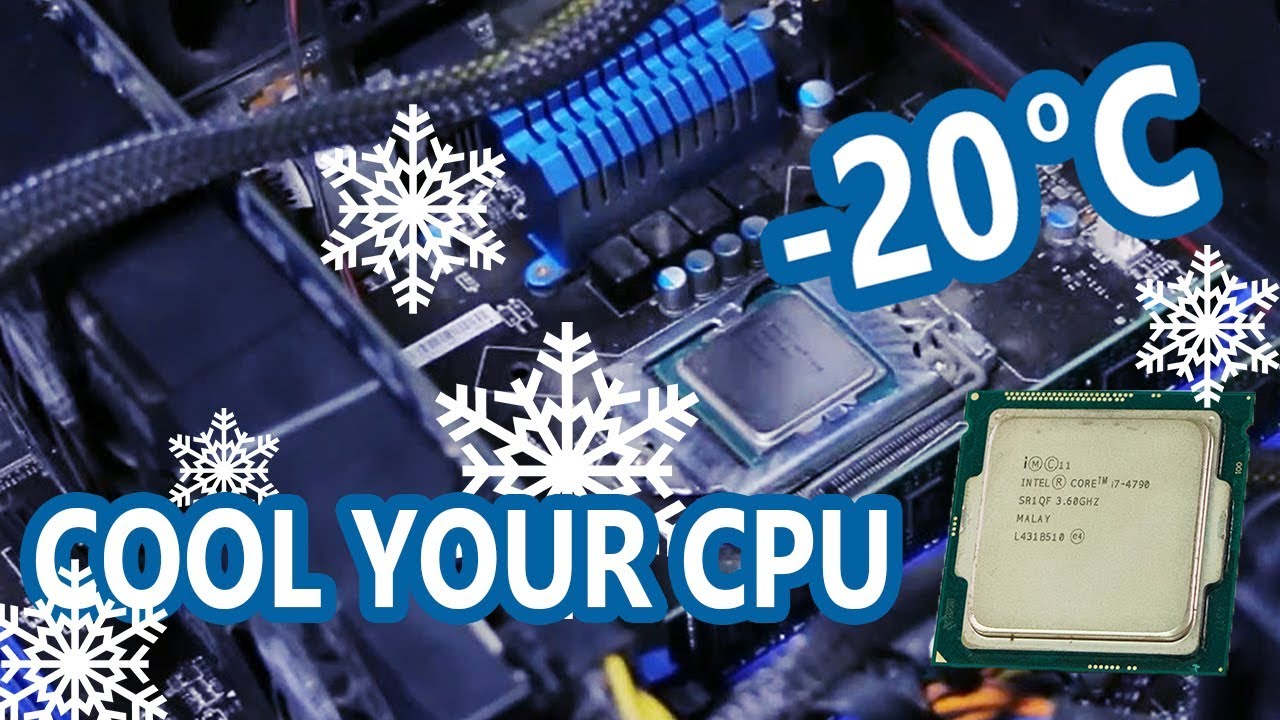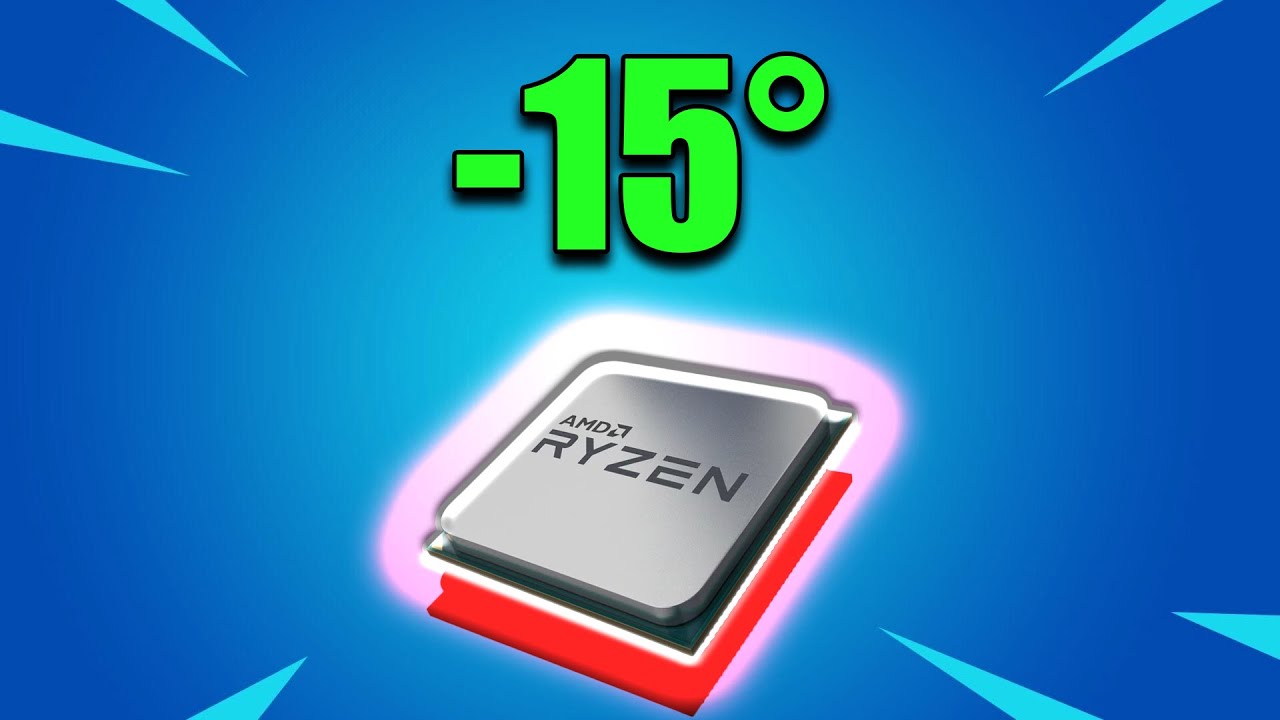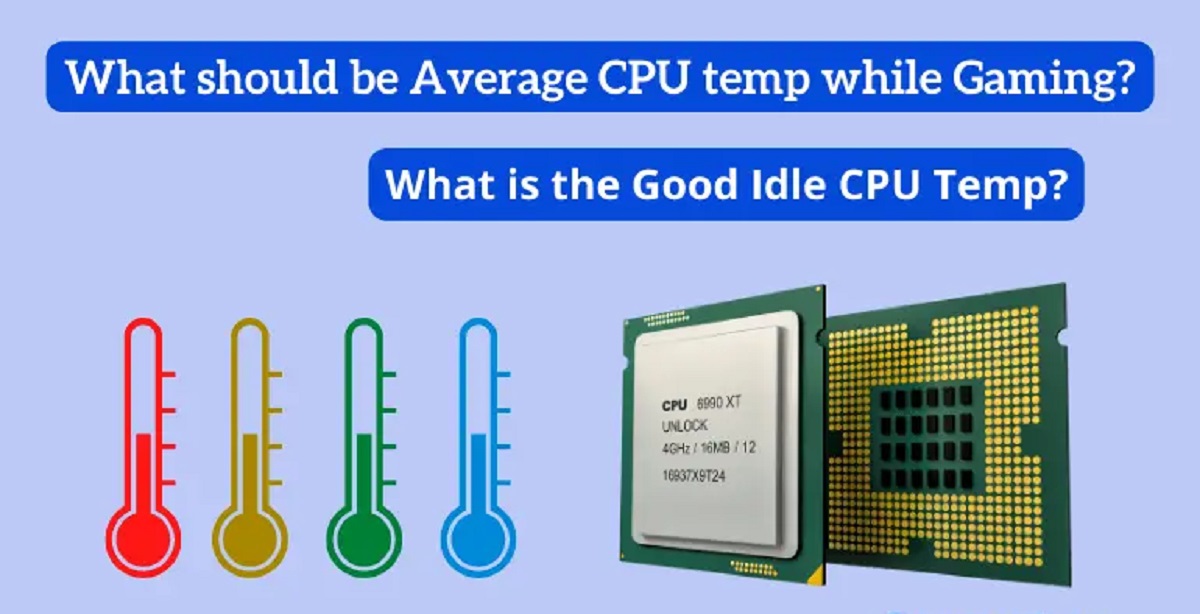Introduction
Welcome to our guide on how to lower CPU temperature! If you’re a computer enthusiast or someone who uses their computer for resource-intensive tasks like gaming or video editing, you may have noticed that your CPU temperature can sometimes get quite high. This is completely normal as CPUs generate heat when they’re under heavy load, but it’s important to keep your CPU temperature within safe limits to ensure optimal performance and prevent any potential damage.
When your CPU temperature rises too high, it can lead to thermal throttling, which is a mechanism that reduces the speed of your CPU to prevent overheating. This can result in a noticeable drop in performance and cause your system to become unstable. Over time, excessive heat can also shorten the lifespan of your CPU and other components, so it’s crucial to take steps to lower your CPU temperature.
In this guide, we will discuss the importance of maintaining a low CPU temperature, how to identify signs of high CPU temperature, and provide you with practical tips to help you keep your CPU cool. By implementing these tips, you can not only improve the longevity and performance of your CPU but have a more enjoyable and efficient computing experience overall.
Why is it important to lower CPU temperature?
Lowering CPU temperature is crucial for several reasons. First and foremost, maintaining a low CPU temperature ensures the stability and longevity of your computer system. When your CPU runs too hot, it puts excessive stress on the internal components, which can lead to premature failure or damage. By keeping your CPU temperature within optimal ranges, you can extend the lifespan of your system and avoid costly repairs or replacements.
Reducing CPU temperature also helps to improve overall performance. When your CPU runs hot, it can throttle its speed to prevent overheating, resulting in decreased performance. By lowering the CPU temperature, you can prevent thermal throttling and allow your CPU to operate at its full potential, providing you with smoother multitasking, faster application loading times, and improved gaming performance.
Another important reason to lower CPU temperature is to protect your data. High temperatures can lead to data corruption or loss, especially on storage devices like hard drives and SSDs. By minimizing heat, you reduce the risk of data corruption and ensure the safety of your valuable files.
Furthermore, excessive heat can have a negative impact on energy efficiency. When your CPU runs hot, it requires more power to operate, leading to increased energy consumption. By actively managing and reducing CPU temperature, you can save on electricity costs and contribute to a greener environment.
Lastly, a cooler CPU means a quieter and more pleasant computing experience. When your CPU runs hot, the cooling fans in your computer have to work harder to dissipate the heat, resulting in increased noise levels. By lowering CPU temperature, you can reduce fan speeds and enjoy a quieter environment, perfect for tasks that require concentration or when you simply want to enjoy a peaceful computing experience.
In summary, lowering CPU temperature is essential for maintaining a stable, high-performance system, protecting your data, improving energy efficiency, and ensuring a quieter computing experience. By implementing the tips and strategies discussed in this guide, you can effectively lower your CPU temperature and reap the benefits of a cooler and more efficient computer system.
Signs of High CPU Temperature
Identifying the signs of high CPU temperature is crucial for preventing any potential damage to your computer system. Here are some common indicators that your CPU may be running hotter than it should:
- Frequent system crashes: If your computer frequently crashes or restarts unexpectedly, especially during resource-intensive tasks, it could be a sign of overheating. The CPU may be reaching its thermal limits, causing the system to shut down to prevent further damage.
- Sluggish performance: High CPU temperatures can lead to reduced performance and overall sluggishness. If you notice a significant slowdown in your system’s performance, especially during tasks that used to be smooth and fast, it’s worth checking your CPU temperature.
- Excessive fan noise: When your CPU temperature rises, the system cooling fans will spin faster to dissipate the heat. This can result in increased fan noise, making your computer sound louder than usual. If you notice a sudden increase in fan noise, it may be an indication of high CPU temperature.
- Unusual or high CPU usage: Monitoring your CPU usage is a great way to detect high temperatures. If you notice that your CPU usage is constantly high, even when your computer is idle or during lighter tasks, it could be due to excessive heat causing the CPU to work harder to compensate.
- System freezes or unresponsiveness: Overheating can lead to system freezes or unresponsiveness, where your computer becomes completely unresponsive or takes a long time to respond to your commands. This can be a sign that the CPU is reaching critical temperatures and the system is struggling to function properly.
If you experience any of these signs, it’s important to take immediate action to lower your CPU temperature. Ignoring high CPU temperatures can lead to long-term damage to your hardware, affecting the overall performance and lifespan of your computer system. In the next section, we will provide you with practical tips to effectively lower your CPU temperature and mitigate these issues.
Tips for Lowering CPU Temperature
Lowering CPU temperature is achievable through a combination of hardware and software optimizations, along with proper maintenance. Here are some practical tips to help you effectively lower your CPU temperature:
- Clean your computer regularly: Dust and debris accumulation can hinder proper airflow and cause your CPU to overheat. Regularly clean your computer’s internals, including the CPU cooler, fans, and vents, using compressed air or a soft brush.
- Improve airflow in your computer case: Ensure that your computer case has adequate airflow by organizing cables and avoiding obstructions that block the path of air to your CPU cooler. Consider installing additional case fans and ensuring proper placement for optimal airflow.
- Use a high-quality thermal paste: Apply a high-quality thermal paste between the CPU and its cooler to improve heat transfer. Over time, thermal paste can degrade, so it’s essential to replace it periodically to maintain optimal cooling performance.
- Adjust your computer’s power settings: Configure your computer’s power settings to optimize cooling. Use the “Balanced” or “Power Saver” power plan to reduce CPU usage and heat generation during idle periods.
- Check for any software or driver issues: Outdated or malfunctioning software and drivers can cause your CPU to work harder than necessary. Keep your operating system and drivers up to date to ensure smooth operation and minimize unnecessary CPU usage.
- Consider adding additional cooling solutions: If your CPU temperature consistently stays high, despite cleaning and optimization efforts, consider investing in additional cooling solutions like an aftermarket CPU cooler or a liquid cooling system.
By implementing these tips, you can effectively lower your CPU temperature, enhance the stability and performance of your computer system, and improve its overall lifespan. Remember, regular maintenance and monitoring are key to ensuring your CPU stays cool. Now that you’re equipped with these strategies, you can take proactive steps to keep your CPU temperature within safe and optimal ranges.
Clean Your Computer Regularly
Regularly cleaning your computer is essential for maintaining optimal cooling performance and lowering CPU temperature. Over time, dust, dirt, and debris can accumulate inside your computer case, obstructing airflow and causing your CPU to overheat. Here are some steps to effectively clean your computer:
- Power off your computer and unplug all cables: Before starting the cleaning process, ensure that your computer is completely powered off and disconnected from any power source.
- Open your computer case: Depending on your computer model, you may need to remove screws or use a latch to open the case. Refer to your computer’s manual for specific instructions on how to open the case safely.
- Use compressed air to remove dust: Using a can of compressed air or an electric air compressor, carefully blow away dust and debris from the CPU cooler, fans, and other internal components. Hold the canister or compressor at a safe distance to avoid damaging any sensitive parts and ensure proper ventilation.
- Pay attention to the CPU cooler and fans: Clean the CPU cooler and fans thoroughly, as they tend to accumulate the most dust. Hold the fans in place while blowing compressed air to prevent them from spinning too fast and potentially getting damaged.
- Check and clean the vents: Inspect the vents on the computer case and the power supply unit (PSU). Use compressed air to remove any dust or obstructions, ensuring that air can flow freely in and out of your computer.
- Organize cables: Proper cable management is crucial for maintaining adequate airflow. Organize cables using zip ties or cable management solutions to minimize cable clutter and optimize airflow within your computer case.
- Close the computer case: Once you are satisfied with the cleaning, securely close the computer case, ensuring that all screws or latches are properly fastened.
- Power on your computer: After cleaning, reconnect the power cables and turn on your computer to ensure everything is functioning correctly.
Try to clean your computer at least every few months or more frequently if you notice a significant build-up of dust. Regular cleaning will help to prevent dust from clogging your CPU cooler and other components, allowing for better airflow and lower CPU temperature.
Taking the time to clean your computer regularly is an effective way to maintain optimal cooling performance and extend the life of your CPU. This simple maintenance task can go a long way in keeping your computer running smoothly and preventing overheating issues.
Improve Airflow in Your Computer Case
Improving the airflow in your computer case is crucial for keeping your CPU cool and maintaining optimal performance. Good airflow helps to dissipate heat effectively and prevents the accumulation of hot air around your CPU. Here are some tips to improve airflow in your computer case:
- Remove obstructions: Ensure that there are no cables, components, or other objects obstructing the airflow inside your computer case. Keep the area around the CPU cooler, fans, and vents clear to allow for unobstructed airflow.
- Optimize fan placement: Check the placement of your case fans to ensure they are properly positioned to provide optimal airflow. Place intake fans at the front or bottom of the case and exhaust fans at the top or rear to create a steady flow of cool air entering and hot air exiting the case.
- Add additional case fans: If your computer case has vacant fan mounts, consider adding additional case fans to improve airflow. This can help distribute cool air more evenly and enhance overall cooling performance.
- Use dust filters: Install dust filters on intake fans and vents to prevent dust and debris from entering your computer case. Dust filters help to reduce the build-up of dust inside your case, minimizing the impact on airflow and cooling efficiency.
- Consider a fan controller: If your case fans are running at full speed all the time, it can create unnecessary noise and may not be efficient for cooling. Consider installing a fan controller to regulate fan speed based on temperature, ensuring optimal cooling performance while keeping noise levels in check.
- Optimize cable management: Proper cable management helps to improve airflow by reducing clutter and allowing more space for air to flow freely inside your computer case. Use cable ties and routing clips to organize and secure cables, keeping them away from fans and other components.
- Monitor and adjust fan speeds: Use fan control software or BIOS settings to monitor and adjust fan speeds based on CPU temperature. Increasing fan speeds when the CPU is under heavy load can help to dissipate heat more effectively, while decreasing fan speeds during idle periods can reduce noise levels.
By implementing these strategies, you can significantly improve airflow within your computer case and enhance the cooling performance of your CPU. Remember to regularly monitor your CPU temperature and adjust fan speeds or make further optimizations as needed.
Maximizing airflow is essential for maintaining low CPU temperatures and preventing overheating-related issues. By keeping your computer case well-ventilated and optimized for airflow, you can ensure that your CPU operates within safe temperature ranges and enjoys optimal performance and longevity.
Use a High-Quality Thermal Paste
Using high-quality thermal paste is essential for ensuring efficient heat transfer between your CPU and its cooler. Thermal paste fills the microscopic gaps between the CPU and cooler, maximizing contact and improving heat dissipation. Here’s why using a high-quality thermal paste is important:
1. Enhanced Heat Transfer: High-quality thermal paste, also known as thermal compound or thermal interface material (TIM), is formulated to have excellent thermal conductivity. It helps to bridge the gaps and imperfections on the surfaces of the CPU and cooler, facilitating the transfer of heat from the CPU to the cooler effectively. This results in lower CPU temperatures and improved cooling performance.
2. Prevents Air Gaps: Air gaps between the CPU and cooler can disrupt heat transfer and lead to increased CPU temperatures. High-quality thermal paste eliminates these air gaps, ensuring maximum surface contact between the CPU and cooler. This helps to minimize thermal resistance and allows for efficient heat dissipation.
3. Long-Lasting Performance: Cheap or low-quality thermal paste often degrades over time, resulting in decreased heat transfer efficiency. High-quality thermal pastes, on the other hand, are designed to remain stable and maintain their performance for extended periods. This ensures that your CPU stays cool and properly cooled even after months or years of use.
4. Easy Application and Removal: Top-notch thermal pastes are typically easy to apply, allowing for a smooth and even spread. They also make it easier to remove the cooler when necessary without leaving behind residue that can interfere with subsequent applications. This simplifies the process of reapplying the thermal paste during upgrades or maintenance.
When applying thermal paste, it’s important to follow the manufacturer’s instructions. Generally, a small pea-sized amount in the center of the CPU or a thin line across the surface is sufficient. Spread the paste evenly using a plastic card, or let the mounting pressure from the cooler spread it naturally. This ensures an optimal distribution of the thermal paste and helps maximize its effectiveness.
Overall, using high-quality thermal paste is crucial for maintaining low CPU temperatures and optimal cooling performance. It allows for efficient heat transfer, prevents air gaps, offers long-lasting performance, and makes application and removal hassle-free. Consider investing in a reputable thermal paste brand to ensure the best thermal conductivity and to keep your CPU running cool under heavy loads.
Adjust Your Computer’s Power Settings
Adjusting your computer’s power settings can play a significant role in managing CPU temperature and reducing heat generation. By optimizing the power settings, you can effectively lower CPU temperatures and improve overall cooling performance. Here are some tips to adjust your computer’s power settings:
- Choose a power plan: In Windows operating systems, you can select from different power plans, such as “Balanced,” “Power Saver,” or “High Performance.” The “Balanced” power plan is typically recommended as it balances energy efficiency and performance. However, if you prioritize cooler CPU temperatures over performance, consider using the “Power Saver” plan, which can decrease the CPU power consumption and heat generation.
- Customize advanced power settings: Within each power plan, you can further customize advanced power settings to better suit your needs. Access the “Power Options” in your operating system’s control panel or settings menu to adjust parameters such as CPU power management, cooling policy, and maximum processor state. Decreasing the maximum processor state can effectively limit the CPU’s performance and reduce heat output.
- Utilize CPU power management features: Modern CPUs often come equipped with power management features that can dynamically adjust the CPU frequency and voltage based on workload. Enable these features in your computer’s BIOS settings or in your operating system’s power management settings to allow the CPU to scale its power consumption and heat generation according to the demands of your tasks.
- Avoid overclocking: Overclocking involves increasing the clock speed of your CPU beyond its rated specifications to enhance performance. However, it also results in increased heat generation. If you’re seeking lower CPU temperatures, avoid or reduce overclocking as it puts additional stress on the CPU and can lead to higher temperatures.
- Monitor CPU usage: Keep an eye on your CPU usage to assess if any specific applications or processes are excessively taxing on the CPU. Task Manager or third-party monitoring software can help you identify resource-intensive tasks. By closing unnecessary programs or limiting their usage, you can reduce CPU usage and lower heat production.
- Take advantage of hibernate or sleep modes: When your computer is not in use, consider utilizing hibernate or sleep modes instead of leaving it running at full power. These modes reduce energy consumption and give your CPU a break, resulting in lower temperatures. Just make sure to properly save your work before engaging these power-saving modes.
By adjusting your computer’s power settings, you can effectively manage CPU temperature and balance performance with heat generation. Experiment with different power plans and settings to find the right balance for your needs. Remember, the goal is to optimize power usage while maintaining a cool and stable CPU.
Regularly monitor your CPU temperatures while adjusting power settings to ensure that the changes you make are effectively decreasing heat production without sacrificing performance. With proper power management, you can significantly lower CPU temperatures and improve overall cooling efficiency, leading to a more thermally stable computer system.
Check for any Software or Driver Issues
Software or driver issues can contribute to high CPU temperatures and hinder proper cooling performance. It’s important to regularly check for any software or driver-related problems to ensure that your CPU is not unnecessarily stressed or running hotter than it should. Here are some steps to help you identify and resolve these issues:
- Update your operating system: Keeping your operating system up to date is crucial for optimal system performance. Manufacturers often release updates that include bug fixes and performance enhancements, which can help resolve software-related issues that may result in higher CPU temperatures.
- Update device drivers: Outdated or malfunctioning device drivers can cause increased CPU usage and generate more heat. Update drivers for your motherboard, graphics card, network adapter, and other components. Visit the manufacturer’s website or use driver update software to ensure you have the latest drivers installed.
- Scan for malware: Malware or viruses can run in the background, putting a strain on your CPU and generating excessive heat. Perform regular system scans using reliable antivirus software to detect and remove any malware that may be impacting your CPU’s performance.
- Monitor CPU usage: Use task manager or other system monitoring software to identify any applications or processes that are monopolizing your CPU resources. High CPU usage can lead to increased heat production. If you notice any specific software causing excessive CPU usage, consider updating, reinstalling, or even removing it to alleviate the stress on your CPU.
- Clean up unnecessary software: Over time, your computer may accumulate unnecessary software or bloatware that runs in the background and consumes CPU resources. Identify and remove any unnecessary programs that are not utilized or are known to be resource-heavy, freeing up CPU usage and reducing heat generation.
- Optimize startup programs: Review the programs that launch automatically when your computer starts up. Disable any programs that are not essential, as they can increase CPU usage and prolong the time it takes for your computer to reach normal operating temperatures.
- Perform a clean reinstall: If you have tried all the above steps and are still experiencing high CPU temperatures, consider performing a clean reinstall of your operating system. This can eliminate any software-related issues and provide a fresh start for your computer.
By addressing software or driver issues, you can improve CPU performance and reduce heat generation. Regularly updating your operating system and drivers, scanning for malware, monitoring CPU usage, and optimizing software settings will help ensure that your CPU is running efficiently and maintaining lower temperatures.
If you continue to experience high CPU temperatures after addressing potential software or driver issues, it is recommended to seek professional assistance to identify any underlying hardware problems that may be causing the issue.
Consider Adding Additional Cooling Solutions
If you’ve tried the previous tips and are still struggling with high CPU temperatures, it may be time to consider adding additional cooling solutions to your computer. Here are some options to help you effectively lower CPU temperatures:
- Aftermarket CPU cooler: Upgrading your CPU cooler to an aftermarket cooler can significantly improve cooling performance. Aftermarket coolers often have larger heatsinks, more heat pipes, and more efficient fans compared to stock coolers, resulting in better heat dissipation and lower CPU temperatures.
- Liquid cooling: Liquid cooling, or water cooling, is another option to consider for enhanced cooling performance. Liquid cooling systems use a pump to circulate coolant through tubes and a radiator to dissipate heat. This method can provide more efficient cooling and lower CPU temperatures, especially during demanding tasks or overclocking.
- Additional case fans: Increasing the number of case fans can improve airflow within your computer case, helping to keep your CPU cool. Consider adding intake fans at the front and bottom of your case and exhaust fans at the top and rear. This will help create a steady flow of cool air entering your case and hot air exiting, maximizing cooling efficiency.
- Fan speed controller: Installing a fan speed controller allows you to manually adjust the speed of your case fans. By increasing fan speeds during intensive tasks or when CPU temperatures are high, you can ensure better airflow and faster heat dissipation. Adjusting fan speeds can help strike a balance between cooling performance and noise levels.
- Heat sinks and heat spreaders: Heat sinks and heat spreaders are additional cooling components that can be attached to your CPU or other heat-generating components. They help absorb and disperse heat more effectively, thereby lowering the temperature of the CPU and improving overall cooling performance.
- Improved thermal insulation: Ensuring that your case is properly insulated and sealed can prevent heat leakage and help maintain lower CPU temperatures. Consider using high-quality thermal insulation materials or insulating foam to minimize heat transfer to other components and the surrounding environment.
When considering additional cooling solutions, keep in mind factors such as compatibility with your computer case and component specifications. Conduct thorough research, read reviews, and seek expert advice if needed to make an informed decision based on your specific needs and budget.
Adding extra cooling solutions can significantly lower CPU temperatures and improve overall system stability and performance. Whether you opt for aftermarket coolers, liquid cooling, or additional case fans, investing in proper cooling can help ensure a cooler and more efficient computing experience.
Conclusion
Maintaining a low CPU temperature is essential for optimal performance, system stability, and the longevity of your computer. By implementing the tips and strategies outlined in this guide, you can effectively lower your CPU temperature and create a cooler and more efficient computing environment.
We started by emphasizing the importance of lowering CPU temperature and understanding the potential risks of high temperatures. Signs of high CPU temperature such as frequent crashes, sluggish performance, excessive fan noise, and system freezes were highlighted as indicators to watch out for.
We then provided practical tips for lowering CPU temperature. Cleaning your computer regularly and improving airflow within your computer case can significantly reduce heat buildup. Using high-quality thermal paste ensures efficient heat transfer between your CPU and cooler. Adjusting your computer’s power settings, checking for software or driver issues, and considering additional cooling solutions are all effective strategies for managing CPU temperature.
It’s important to note that achieving a lower CPU temperature is not a one-time task. Regular maintenance, monitoring, and the occasional adjustment might be necessary depending on your computer usage and workload. By staying proactive, you can ensure your CPU stays cool, which maximizes performance and extends the life of your computer system.
Remember, each computer system is unique, and what works for one may not work the same way for another. It is important to be mindful of the specific requirements and limitations of your hardware when implementing these tips. If you’re unsure or need assistance, it’s always recommended to consult with a professional.
By taking the necessary steps to lower CPU temperature, you can create a more efficient and reliable computing experience. Enjoy smoother multitasking, faster processing speeds, and fewer system issues as you keep your CPU cool and performing optimally.







